Whether you’re learning to play the guitar yourself, or thinking of purchasing one for your child, the first decision you’ll need to make is if you’re going to buy an acoustic guitar, or an electric guitar.
Each of them have their own pros and cons so in this article I’ll be comparing them head-to-head so you can figure out exactly which is the best choice for you. I’ll also be listing some of the best acoustic and electric guitars for beginners at the end of the article.
Here’s a quick summary of the advantages of each type of guitar for beginners.
| Acoustic Guitar | Electric Guitar |
| No extra equipment needed so works out cheaper | Requires less finger strength to play so feels easier for beginners |
| Less complicated to use (no controls or amp) | Thinner body and neck so feels more manageable |
| No power supply needed | Sounds quieter when unplugged and you can play with headphones |
| Great for folk, singer-songwriting, bluegrass, classical, pop and country | Great for rock, metal, blues, pop, R&B and country |
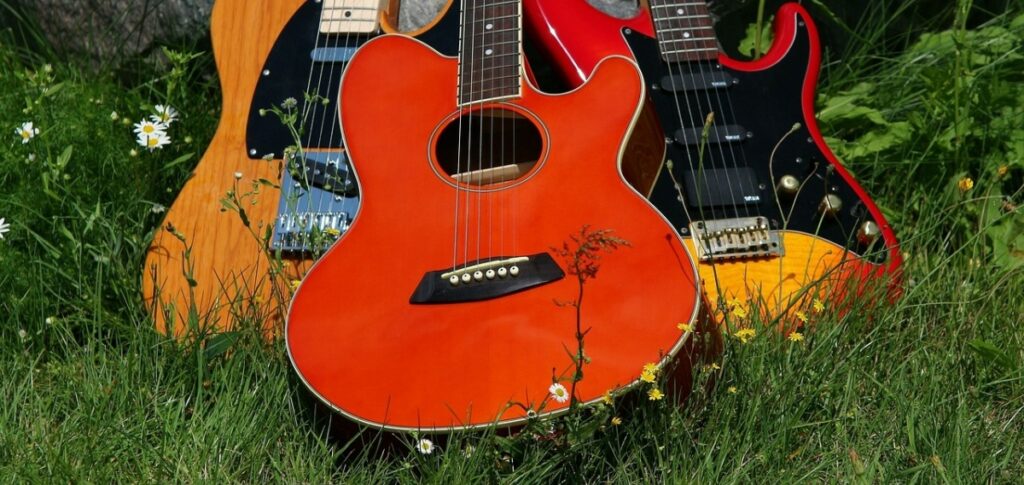
Which is Easiest to Learn On?
There’s two schools of thought here.
Some argue that acoustic guitars are easier to learn on because you don’t need to worry about using any controls on the guitar itself, or learning how to use an amplifier.
Whilst this is true, I strongly believe electric guitars are significantly easier to learn on if you’re a beginner. There are four reasons why:
- The strings are closer to the fretboard meaning you don’t have to press down as hard. This makes it easier on the fingertips for beginners who haven’t yet developed much finger strength.
- The strings on electric guitars are thinner so under less tension, again making them easier to hold down.
- The body of an electric guitar is thin and more ergonomic than an acoustic guitar, so it feels more comfortable to sit and stand with.
- The necks on most electric guitars are slimmer which feels more comfortable for a lot of beginners.
String Height
One of the biggest reasons why beginner guitarists quit and never pick their guitar up again is because at first, it will hurt to play. The metal strings that you need to hold down against the fretboard are under a lot of tension so your fingertips will feel very sore at first.
This is temporary, as after a few weeks of playing, calluses will develop and it won’t hurt at all, however it puts a lot of new players off.
String Tension
A set of electric guitar strings is usually between 0.009″ and 0.042″ thick. Whereas, a set of acoustic guitar strings is usually between 0.012″ and 0.054″ thick. The thicker the strings are on a guitar, the more tension they are under.
- Electric guitar strings are under 13-25 lbs of tension
- Acoustic guitar strings are under 23-27 lbs of tension
This means that acoustic guitar strings are significantly harder on the fingertips. Combine this with the fact that the strings are further from the fretboard, and it means that acoustic guitars can be quite tricky for beginners to get to grips with.
Body and Neck Size
A full-size acoustic guitar will feel very intimidating for a beginner. The necks are chunkier and the large body makes it more difficult to get your arm over and strum. If you plan on learning on an acoustic guitar, consider one with a smaller body as this will make it more manageable.
Unless you go for an especially heavy electric guitar, then you’ll find that it feels much easier to sit and stand with as the bodies are thinner, and the necks are too.
Are Electric Guitars Confusing for Beginners?
So the argument for acoustic guitars being easier to learn on stems from the fact that electric guitars have different controls on them, and need plugging into amps which again, have lots of confusing looking controls.
Although the controls on a electric guitar look confusing at first, they honestly aren’t that tricky. Most electric guitars have three main controls:
- Volume control: pretty obvious, this one doesn’t need explaining
- Tone control: this adjusts how bright or warm the guitar sounds. If it’s confusing you at first, just leave it on maximum.
- Pickup selector: most electric guitars have 2 or 3 pickups which sound different. Using the pickup selector to activate the different pickups producing different tones.
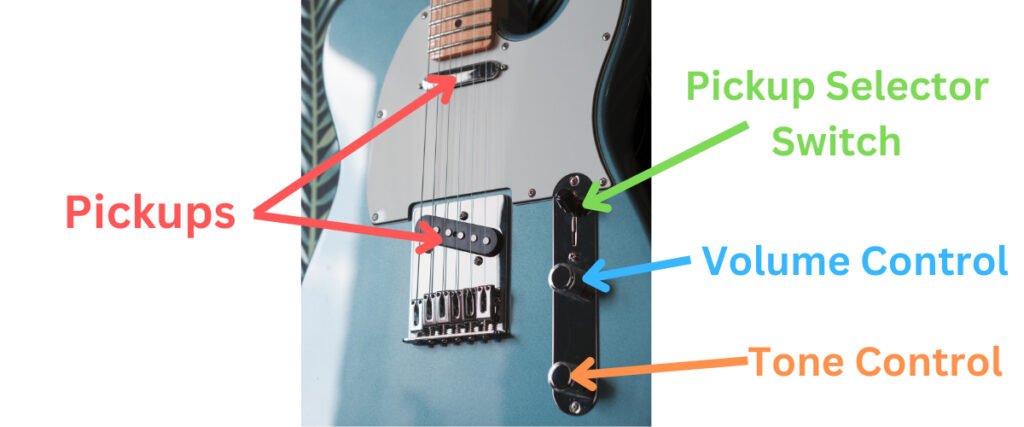
I won’t get into the nitty gritty of the different amp controls here, but again, they aren’t as confusing as they look. You’ll very quickly come to appreciate how much versatility these controls give you.
I’ve actually written two different articles to help beginners here too:
What Music Styles are You Interested In?
I think this is one of the biggest questions you should ask yourself when deciding between an electric or acoustic guitar.
Sure, an electric guitar might be a little easier on the fingertips, but that’s something that won’t matter after a few weeks when the calluses have developed.
You need to choose a guitar which inspires you to pick it up and play. After all, you’ll only improve if you continue to practice, so you should pick the type of guitar which will make you want to play the most.
Acoustic Guitars are Best For:
- Folk
- Singer/ song-writing
- Bluegrass
- Classical
Electric Guitars are Best For:
- Rock
- Metal
- Blues
- R&B
There is definitely some crossover when it comes to music styles and guitar suitability. For example, some country songs use both acoustic and electric guitars. The same goes for pop music.
Think about your favourite songs. Which songs inspired you to want to learn guitar. Most people want to play because they’re inspired by their favourite bands. Do they use primarily acoustic or electric guitars?
It’s worth noting here that electric guitars are more versatile than acoustic guitars. It is possible to set up your amplifier to try and make your electric guitar sound more like an acoustic. It’s not going to sound exactly the same, but it’s not really possible to try and make an acoustic guitar sound like an electric.
So, if you want to play a pretty even mix of acoustic and electric guitar songs, then go for an electric. This is what I did personally until I felt like an acoustic guitar was worth investing in as well as I continued to learn more acoustic songs.
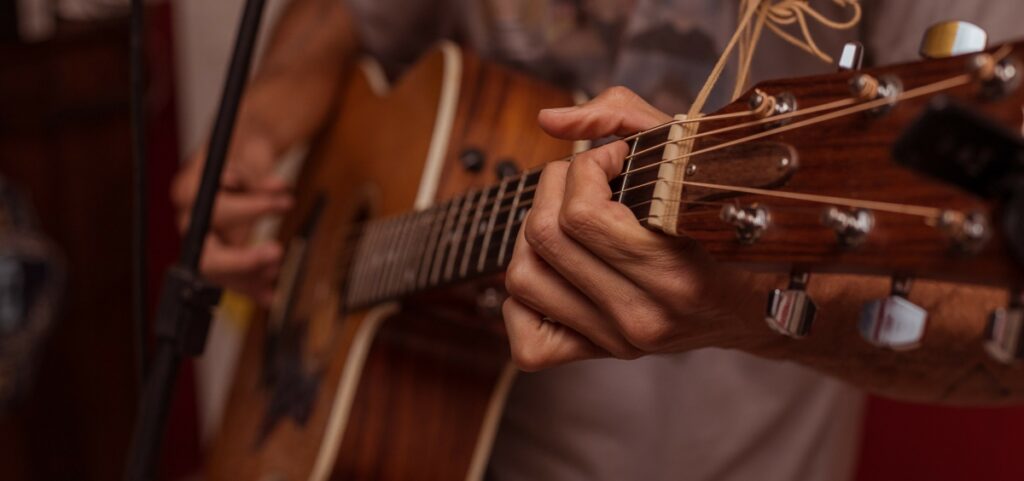
Cost of Electric and Acoustic Guitars
One benefit of learning to play on an acoustic guitar is that it doesn’t cost as much to get up and running. With electric guitars, you’ll need the guitar itself, the amp, and a cable to connect the two. However, with an acoustic guitar you literally just need the guitar so it typically works out cheaper.
You can get bundles which include the electric guitar, amp and cable which generally works out cheaper than buying all the equipment separately.
- Acoustic guitars usually start at $100
- Electric guitar + amp + cable bundles usually start at $250
The start up cost of electric guitars does put some people off. You can play an electric guitar unplugged and save up for the amp though if you can’t purchasing everything all at once.
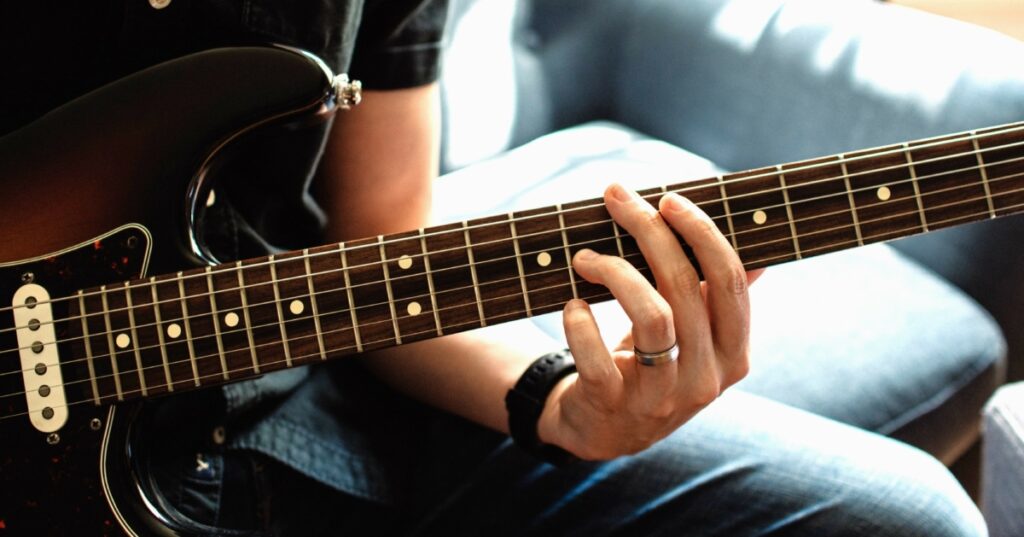
Other Considerations
Volume
Although electric guitars are louder than acoustic guitars when plugged in, they are much quieter when unplugged. This allows you to practice at any time of day without annoying housemates or neighbours. Acoustic guitars can be easily heard through the walls so your housemates are likely to hear when you are practicing which could limit when you are able to play.
Power Source
Electric guitars need to be plugged into an amp in order to really get the full experience. This means you’ll need to make sure you have an accessible mains power supply. Do not use extension cables to power the amp. With acoustic guitars you don’t need to worry about electricity and can just pick it up and play.
Portability
You’re probably only going to need to take your guitar out and about with you if you are having lessons. Acoustic guitars are lighter, but they are larger than electric guitars so can be harder to carry. Don’t worry about the amp too much, the tutor will have one you can use if you can’t easily transport your own.
Space Available
Electric guitar amps are pretty small and most starter amps are only about 12.5″ x 5″ x 7″ (height x width x depth), so don’t take up loads of room, but you will need enough floor space available to play it and store it. The guitars themselves can easily be wall-mounted if you’re short on space.
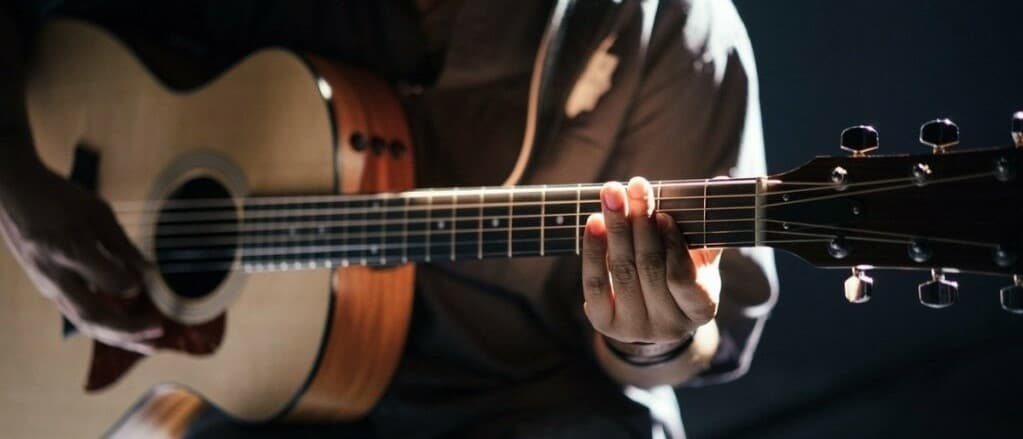
Which Should You Choose?
Consider the following question.
Are your favourite songs that you’re most excited to learn played on an acoustic guitar, or an electric guitar?
Whichever the answer is, I think is the best option for your first guitar. This is the instrument which will make you more likely to practice and improve the fastest.
An electric guitar will feel easier at first, but if your major inspiration to learn guitar is Ed Sheeran, you’ll get pretty bored of an electric guitar quickly. On the other hand, if you love Nirvana, an acoustic guitar just isn’t going to get you excited, even if someone tells you “you must learn on an acoustic first”.
Considering the bass too? Check out my complete comparison between bass and electric guitars.
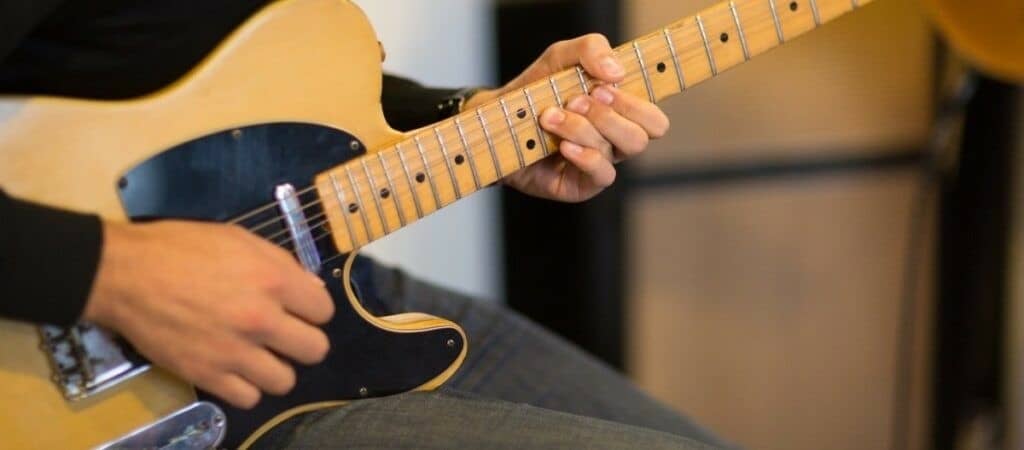
Best Electric Guitars for Beginners
You’ve got two options here:
- Get an electric guitar + amp + cable bundle
- Purchase your guitar, amp and cable separately
The bundles usually include some other useful accessories such as a gig bag, picks and strap. The pick and strap are pretty cheap and you can usually pick them up separately for about $15-$20, but if you need a gig bag then it’ll definitely work out more cost effective if you get a bundle.
The drawback of these bundles is that the guitars and amps aren’t going to sound incredible, and after a year or two of playing you are probably going to want to upgrade. If you aren’t interested in the gig bag, then you’ll get a better guitar and amp for just slightly more money (or sometimes even the same amount) than the bundle.
Here are some of my top picks for each option.
Best Bundle Option
Squier Stratocaster + Frontman Amp
- Includes gig bag, picks, strap, and a cable
- Cost-effective option
- Iconic Stratocaster guitar shape
Best Beginner Electric Guitars
Epiphone Les Paul Special
- Comfortable to play
- Excellent value for money
- Iconic shape
Jackson Dinky JS11
- Comes in a range of colors
- Slim and lightweight feel
- Great for rock and metal
Best Beginner Amplifiers
Orange Crush12
- Great tones for an entry-level amp
- Easy to use controls
- Small and compact
- Great value
Blackstar ID Core 10
- Very versatile
- Lots of effects built-in
- Aux input so you can play along to backing tracks
Best Acoustic Guitars for Beginners
Squier SA-150
- Thinner body so easier to hold
- Great value
- Classic appearance
Yamaha F335
- Very nice appearance for an entry-level guitar
- Nice balanced tone
- Good value for money
Alvarez Artist Series AD30
- Solid top (better sound than cheaper options)
- Full-size body and scale length
- Fun fact: this was my first acoustic guitar
Nylon vs Steel String Acoustic Guitars for Beginners
Nylon string acoustic (classical) guitars feel softer on the fingertips, however they typically have a thicker neck so are not easier to play compared to steel string acoustic guitars.
Nylon strings are usually used for classical and Spanish music styles. Whereas steel strings are used for other genres such as rock, pop and country. So the same advice I gave previously goes here too. Choose the one which works best for the styles of music you want to play.








